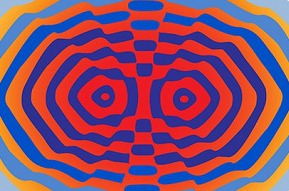Staying With the Trouble

Alan writes:
I recently had to prepare a description of my research for institutional purposes and wrote the following to introduce the project and where we go next with it.
The express purpose of the ‘Parameters & Practice’ project was to lay the groundwork for a hybrid mode of creative research work and to offer a model for artistic/academic collaboration. In its first phase, the project has been a year-long academic-artistic collaborative project between myself and my partner, dance artist Marie Hallager Andersen, undertaken between September 2018 and October 2019. Each week, one of us set a creative task for the other; the second person performed the task and recorded a response, and the following week set a further task for the first person; and so on throughout the year, with tasks, responses and reflections documented weekly on the project website.
Parameters & Practice is collaborative in its very structure and texture. Although it touches on themes like intimacy, domestic and emotional labour, whiteness, the ageing body, and many others, the project’s real concern has been with its own operation, and so it works through the fascination with method that has always motivated my work. It enacts and exemplifies a material-thinking turn in my research (also present in the videographic work), in which insight is achieved through interaction and creative doing-making rather than through critical distance; as such, its operative epistemology is ‘diffractive’, a term I borrow from Donna Haraway to signal that the activity of the project generates knowledge as a creative intervention rather than via a disinterested ‘reflection’.
And yet, in terms of its express rationale, the project so far has been a failure: as I admit in the final project response, the project has not made ‘progress’ and has reached no final artistic-academic goal; as such (perhaps), it can’t provide the model we hoped of artistic/academic collaboration. But this admission and condition seems to me a key, if paradoxical, virtue of the project, being an instance of what Jack Halberstam has called ‘the queer art of failure’. To adapt the blurb of Halberstam’s 2011 book of that name, this project’s particular failure can be seen as having opened to some more creative, cooperative, and surprising way of being in the world, even as it forced its two collaborators to face some of the dark sides of life, love, and libido.
Given the forgoing, please forgive the speculative nature of our plans for the development of this project. Certainly, and concretely, it continues with a videoessay we are currently preparing that reports on and analyses the work so far, for the Journal of Embodied Research, and a prose article we hope to place in the Journal for Artistic Research. But Marie and I intend to make the queer art of failure essential to the future activities of the project, in which we open the method of the exchange of tasks to other artists and academics with no expectation of specific outcomes. Of course, the project will generate funding bids to support its development and expansion, because of our conviction that ‘staying with the trouble’ (to invoke Donna Haraway again), in the sense of working with no expectation of success, is a form of creative and cognitive empowerment, a means of fomenting artistic, academic and social innovation.
